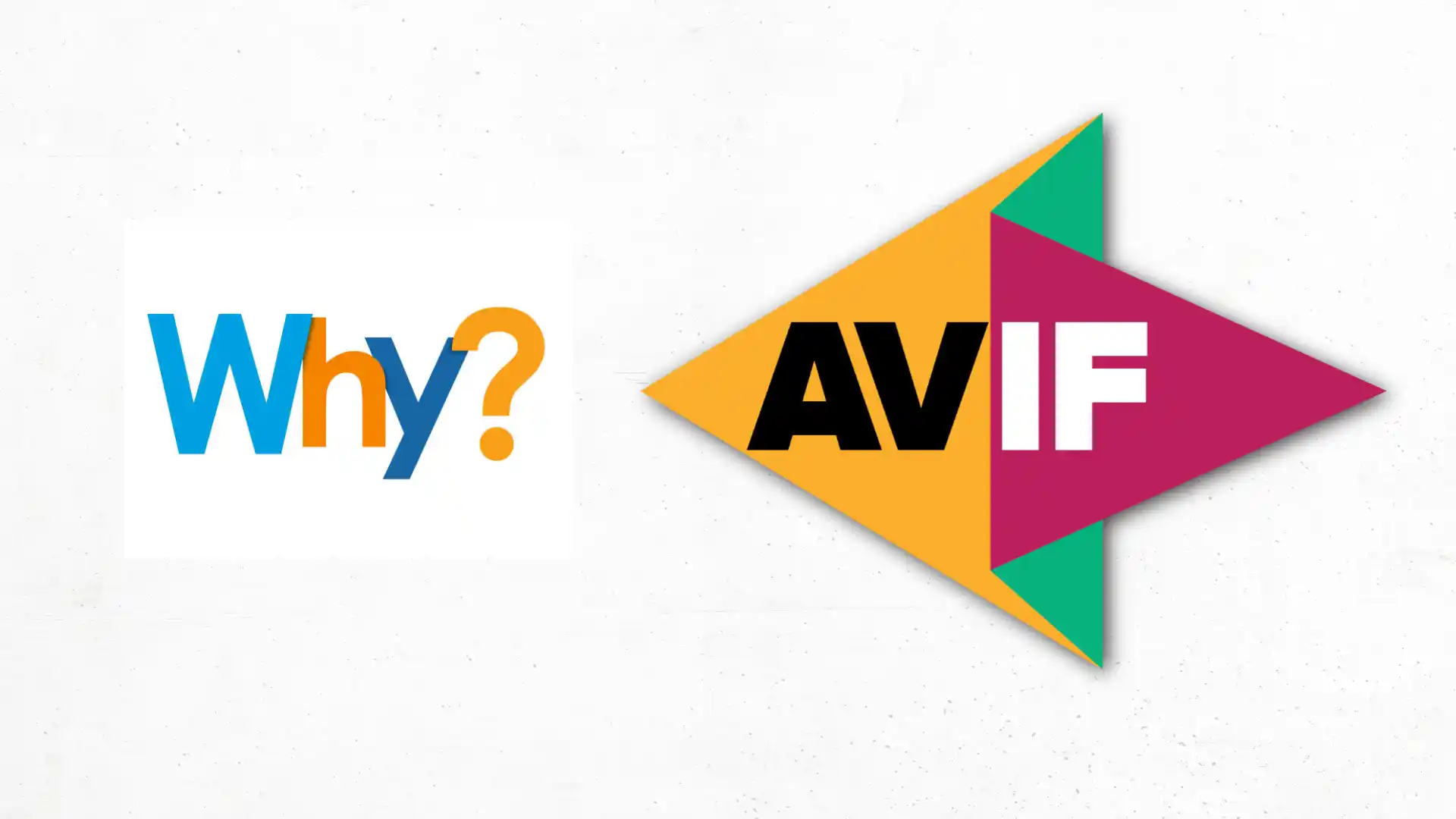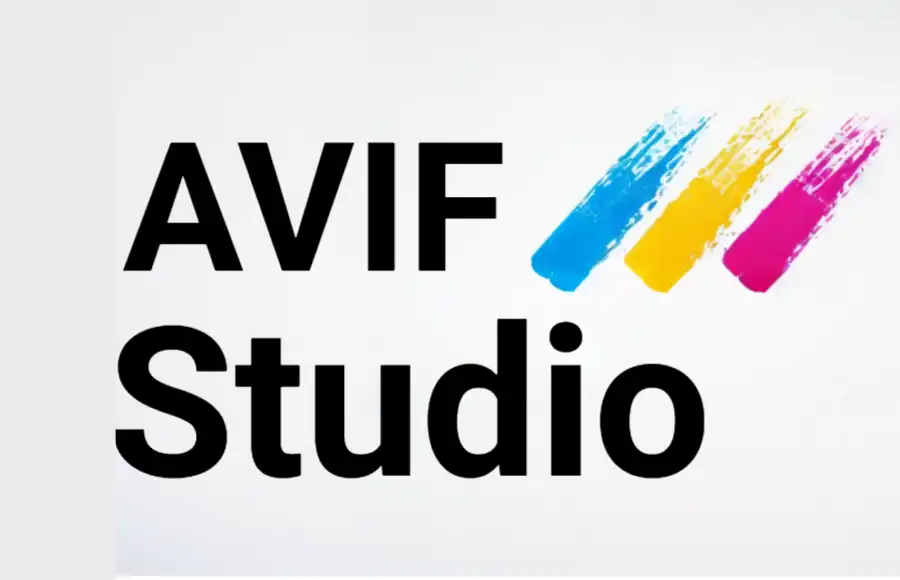Why AVIF Format Is Important

In the digital age, where images are pervasive across the web, optimizing their quality and size is crucial. AVIF (AV1 Image File Format) emerges as a game-changer in this realm, offering significant advantages over traditional formats like JPEG and PNG. Let's delve into why AVIF format is important and how it's revolutionizing the way we handle images online.
1. Superior Compression Efficiency:
AVIF employs advanced compression techniques, leveraging the power of the AV1 codec. This results in significantly smaller file sizes compared to JPEG or PNG, without compromising image quality. As a result, websites can load faster, enhancing user experience and reducing bandwidth usage.
2. Unmatched Image Quality:
Despite its smaller file sizes, AVIF maintains exceptional image quality. It supports a wide range of color depths, allowing for vibrant and accurate representation of images. Whether it's photographs, illustrations, or graphics, AVIF ensures that visual content appears crisp and detailed, enhancing the overall aesthetics of web pages.
3. Broad Browser Support:
One of the key factors driving the adoption of AVIF is its increasing support across major web browsers. As more browsers integrate AVIF decoding capabilities, web developers can confidently utilize this format without worrying about compatibility issues. This widespread support paves the way for broader adoption and encourages developers to embrace AVIF for image optimization.
4. Future-Proof Solution:
With technology evolving rapidly, it's essential to adopt formats that are future-proof. AVIF emerges as a future-ready solution, backed by industry giants like Google, Netflix, and Microsoft. Its scalability and adaptability make it well-suited for the ever-changing landscape of digital media, ensuring that websites remain optimized for years to come.
5. Eco-Friendly Approach:
Efficient image compression not only benefits website performance but also contributes to a greener environment. By reducing file sizes, AVIF helps minimize data transfer and server load, ultimately leading to lower energy consumption. Embracing AVIF aligns with sustainability goals, making it a responsible choice for web developers and content creators.
6. Enhanced Mobile Experience:
In an era dominated by mobile devices, optimizing images for smaller screens is paramount. AVIF's combination of small file sizes and high-quality imagery makes it ideal for mobile optimization. Websites utilizing AVIF can deliver visually stunning content while ensuring fast load times and smooth browsing experiences on smartphones and tablets.
7. Support for Advanced Features:
Beyond basic image compression, AVIF offers support for advanced features like transparency, animation, and HDR imaging. This versatility opens up new creative possibilities for web designers and developers, allowing them to create richer and more engaging web experiences. Whether it's interactive graphics or immersive multimedia content, AVIF empowers creators to push the boundaries of visual storytelling.
8. Seamless Integration with Existing Workflows:
Transitioning to a new image format can be daunting, especially for established workflows. However, AVIF streamlines the integration process by offering compatibility with existing tools and platforms. With plugins and libraries available for popular content management systems and image editing software, adopting AVIF is a seamless experience for web professionals.
9. Standardization and Accessibility:
As AVIF gains momentum, efforts towards standardization and accessibility are underway. Organizations like the Alliance for Open Media (AOMedia) are actively promoting AVIF as an open, royalty-free format, ensuring widespread accessibility and interoperability. This commitment to openness fosters innovation and collaboration within the digital media community.
10. Competitive Advantage:
In today's competitive online landscape, staying ahead of the curve is essential. Embracing AVIF gives websites a competitive advantage by offering faster load times, better image quality, and improved user experiences. By prioritizing optimization and innovation, businesses can differentiate themselves and attract more visitors to their digital platforms.
In conclusion, the importance of AVIF format in modern web development cannot be overstated. From its superior compression efficiency to its broad browser support and future-proof nature, AVIF offers numerous benefits that make it a compelling choice for image optimization. As the digital landscape continues to evolve, embracing AVIF ensures that websites remain at the forefront of performance, quality, and sustainability.
Frequently Asked Questions
- What are the key advantages of using AVIF format for image compression?
- How does AVIF format maintain high image quality while achieving smaller file sizes?
- What role does AVIF format play in improving website performance?
- How does AVIF format contribute to a more sustainable web ecosystem?
- What are the implications of AVIF format's broad browser support?
- How does AVIF format support advanced features like transparency and HDR imaging?
- How does AVIF format contribute to mobile optimization?
- How does AVIF format facilitate seamless integration with existing workflows?
- What efforts are underway to promote standardization and accessibility of AVIF format?
What are the key advantages of using AVIF format for image compression?
AVIF format offers several key advantages for image compression.
Firstly, it provides superior compression efficiency compared to traditional formats like JPEG and PNG.
AVIF achieves this through advanced compression techniques based on the AV1 codec, resulting in significantly smaller file sizes without compromising image quality.
This efficient compression not only reduces bandwidth usage but also enhances website performance by enabling faster loading times.
Additionally, AVIF supports a wide range of color depths, ensuring accurate and vibrant image representation.
Overall, the key advantages of AVIF format for image compression include superior compression efficiency, smaller file sizes, and improved website performance.
How does AVIF format maintain high image quality while achieving smaller file sizes?
Despite its smaller file sizes, AVIF format maintains high image quality through advanced compression techniques and support for a wide range of color depths.
AVIF utilizes the AV1 codec, which employs state-of-the-art compression algorithms to preserve image detail and clarity.
Furthermore, AVIF supports both lossy and lossless compression modes, giving users flexibility in balancing file size and image quality.
Moreover, AVIF's compatibility with high dynamic range (HDR) imaging ensures that it can accurately represent images with a broad range of colors and tones.
Overall, AVIF achieves a remarkable balance between compression efficiency and image quality, making it an ideal choice for web developers and content creators.
What role does AVIF format play in improving website performance?
AVIF format plays a crucial role in improving website performance by reducing file sizes and optimizing image loading times.
With its superior compression efficiency, AVIF significantly reduces the size of image files compared to traditional formats like JPEG and PNG.
This reduction in file size translates to faster loading times for web pages, enhancing user experience and engagement.
Moreover, smaller image files mean reduced bandwidth usage, which is particularly beneficial for users with limited data plans or slower internet connections.
By incorporating AVIF format for image optimization, web developers can create websites that load quickly and efficiently across various devices and network conditions.
How does AVIF format contribute to a more sustainable web ecosystem?
AVIF format contributes to a more sustainable web ecosystem through its efficient image compression techniques.
By reducing file sizes, AVIF minimizes data transfer and server load, resulting in lower energy consumption and carbon emissions.
This eco-friendly approach aligns with sustainability goals, as it helps mitigate the environmental impact of internet usage.
Furthermore, the adoption of AVIF format encourages web developers and content creators to prioritize optimization and resource efficiency in their digital projects.
Overall, AVIF format plays a significant role in promoting sustainability within the digital landscape by reducing the environmental footprint associated with image delivery and web browsing.
What are the implications of AVIF format's broad browser support?
The broad browser support for AVIF format has several implications for web development and user experience.
As more major web browsers integrate AVIF decoding capabilities, web developers gain confidence in utilizing this format for image optimization.
This broad support reduces compatibility concerns and allows developers to leverage AVIF's benefits across a wide range of platforms and devices.
Moreover, increased browser support accelerates the adoption of AVIF format, driving industry-wide standards and best practices for image compression.
Ultimately, the implications of AVIF format's broad browser support include improved accessibility, streamlined development workflows, and enhanced user experiences on the web.
How does AVIF format support advanced features like transparency and HDR imaging?
AVIF format supports advanced features such as transparency and high dynamic range (HDR) imaging, expanding its creative capabilities.
Transparency, commonly used in graphic design and web development, allows for the creation of images with transparent backgrounds, facilitating seamless integration into various design layouts.
AVIF's support for transparency enables the creation of visually appealing graphics and illustrations without compromising file size or image quality.
Additionally, AVIF's compatibility with HDR imaging ensures accurate representation of images with a wide range of colors and tones.
This support for advanced features opens up new possibilities for creative expression and immersive visual experiences on the web.
Whether it's creating transparent logos or showcasing HDR photographs, AVIF format empowers content creators to deliver engaging and dynamic visual content.
How does AVIF format contribute to mobile optimization?
AVIF format contributes to mobile optimization by combining small file sizes with high image quality, enhancing the mobile browsing experience.
With the proliferation of smartphones and tablets, optimizing images for smaller screens and limited bandwidth is essential.
AVIF's efficient compression techniques ensure that images load quickly and smoothly on mobile devices, regardless of screen size or resolution.
Moreover, AVIF's support for high-quality imagery ensures that mobile users receive visually stunning content without sacrificing performance.
By incorporating AVIF format for image optimization, web developers can create mobile-friendly websites that deliver a seamless browsing experience across various devices.
How does AVIF format facilitate seamless integration with existing workflows?
AVIF format facilitates seamless integration with existing workflows by offering compatibility with popular tools and platforms.
Many content management systems (CMS) and image editing software now support AVIF, allowing users to easily convert and optimize images in the AVIF format.
Additionally, plugins and libraries are available for integrating AVIF support into web development frameworks and platforms.
This seamless integration ensures that web developers and content creators can transition to AVIF format without disrupting their existing workflows.
By incorporating AVIF into their toolsets, developers can streamline the image optimization process and improve overall efficiency in content creation and web development.
What efforts are underway to promote standardization and accessibility of AVIF format?
Efforts are underway to promote standardization and accessibility of AVIF format through collaborative initiatives and industry partnerships.
Organizations like the Alliance for Open Media (AOMedia) are advocating for AVIF as an open, royalty-free format, ensuring widespread accessibility and interoperability.
These efforts include the development of technical specifications, reference implementations, and compliance testing to establish AVIF as a standardized format for image compression.
Furthermore, industry partnerships and collaborations aim to accelerate the adoption of AVIF across various platforms and applications.
By promoting standardization and accessibility, stakeholders seek to foster innovation and ensure that AVIF format remains a viable and widely adopted solution for image optimization.
